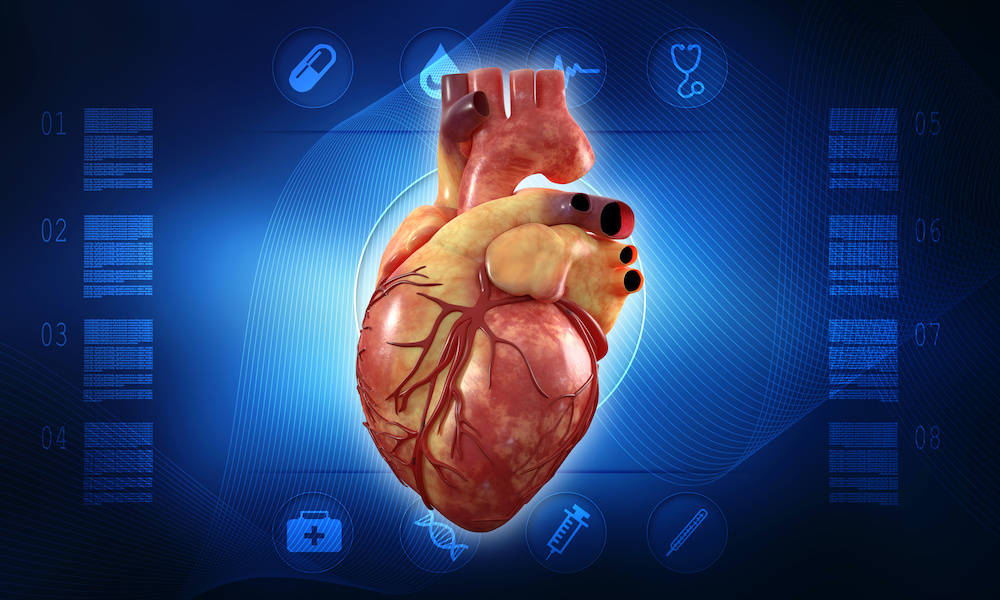Cardiogenic Shock Symptoms: Causes, Effects, and Treatmentsdd

Cardiogenic Shock Explained
First we need to ask, what is Cardiogenic Shock (CS)? CS is a life-threatening condition whereby the heart can’t pump enough blood to meet the body’s needs. While a severe heart attack most often causes it, not everyone who has a heart attack experiences cardiogenic shock. While a serious heart attack usually damages the left ventricle (the main pumping chamber), it can sometimes damage the right ventricle, which pumps blood to the lungs.
Causes and Complications of Cardiogenic Shock
- Myocarditis: inflammation of the heart muscle
- Endocarditis: infection-induced inflammation of the inner lining of the heart
- Arrhythmias: irregular heartbeat (abnormal heart) where either the lower chambers fibrillate (ventricular fibrillation) or where the ventricles beat too fast (ventricular tachycardia)
- Pericardial tamponade: pressure on the heart due to excess fluid present around the heart
- Pulmonary embolism: blood clot developed in a blood vessel; leads to blockage of blood flow
- Rupture of the heart or damage to the valves
- Critical illness: the heart is not able to contract as hard as it should after resuscitation from cardiac arrest or with critical illness following trauma or severe infections
Understanding Heart Disease Symptoms
Symptoms may present fast and include sudden shortness of breath, fainting, dizziness, confusion, anxiety, sweating, chills, rapid and weak heartbeat or heart rhythm, fatigue, or low or absent urinary output. Patients with cardiogenic shock may also enter into a coma if the shock is not treated quickly enough. Furthermore, because cardiogenic shock usually results from a heart attack, patients will usually experience heart attack symptoms – chest pain/pressure, shoulder & arm pain, sweating, nausea, and vomiting.
How a Medical Doctor Can Diagnose CS
A doctor can confirm a Cardiogenic Shock diagnosis by supplementing patient symptoms with testing and vital signs. Testing can include performing an ECG, chest x-ray, blood tests, echocardiogram, or cardiac catheterization. Patients with any type of shock present with low blood pressure end end-organ hypoperfusion (e.g., low urine output). Cardiogenic Shock patients specifically have a low cardiac output, elevated ventricle filling pressures, and decreased venous oxygen saturation.
Managing Heart Failure Disease
Unfortunately, Cardiogenic Shock is a complex disease frequently associated with multisystem organ failure. Few evidence-based interventions can definitively improve patient outcomes. Emergency treatment includes oxygen administration and mechanical ventilation in more severe cases.
Medications Administered to Increase the Heart’s Ability to Pump Blood & Reduce Blood Clot Risk After Cardiogenic Shock.
- Vasopressors: Used to treat low blood pressure (e.g., dopamine, epinephrine, norepinephrine)
- Inotropic agents: Used to improve heart pumping function (e.g., dobutamine, dopamine, milrinone)
- Blood-thinning medications:
- Aspirin: Used sparingly to reduce blood clotting and keep blood moving through arteries
- Antiplatelets: Used to prevent blood clotting (e.g., Plavix)
- Others such as heparin
Beyond medication and immediate treatment, procedures to restore regular blood flow can be performed on patients experiencing Cardiogenic Shock Symptoms. Inside the body, angioplasty and stenting help open blocked arteries and facilitate blood flow to the heart. A balloon pump can be used to assist the heart in pumping blood to the body. Alternatively, in very sick patients, extracorporeal membrane oxygenation (ECMO) allows efficient blood pumping outside of the body through a heart-lung machine.
Doctors can perform surgery on Cardiogenic Shock patients as a last resort, such as coronary artery bypass surgery or a heart transplant.
Epidemiology
Cardiogenic Shock is the leading cause of death after myocardial infarction (a heart attack). Higher incidences of CS occur in women, Asian/Pacific Islanders, and patients older than 75. CS incidence has increased due to improved diagnosis and better global access to care. 6 to 12 month mortality is approximately 50% but can be as high as 70-90% in the absence of aggressive, highly experienced technical care.
Classifying Symptom Severity for Enhanced Treatment Strategies
As there is a broad spectrum of clinical severity among patients presenting with CS, a classification system developed in 2019 stratifies CS into five categories: A (At Risk), B (Beginning), C (Classic), D (Deteriorating), and E (Extremis). CS is difficult to study because patients can deteriorate rapidly, informed consent is hard to obtain from the patient, and a variety of heterogeneous disease states can present as cardiogenic shock. Improved clinical characterization and risk assessment of CS patients may lead to more effective clinical treatment and outcomes in the future.
CVRTI’s Center for Study in Cardiology and Heart Disease
Years of basic and clinical research have positioned investigators from the Nora Eccles Harrison Cardiovascular Research and Training Institute as world leaders in understanding heart biology. In addition, a clear understanding of the mechanisms of injury has led to several therapeutic advancements. The CVRTI’s excellence has materialized in the Utah Cardiac Recovery Program or UCARS . This is a registry that focuses on better understanding CS to improve patient outcomes ultimately. Investigators have also developed a team approach to care for patients with severe CS. They demonstrated that patients managed by a multi-disciplinary team (heart failure cardiologist, heart failure cardiothoracic surgeon, interventional cardiologist, and a Cardiovascular Intensive Care Unit physician) do better. Other groups at the CVRTI focus on developing novel drugs to protect and rescue injured hearts in both acute and chronic conditions. Investigators from the CVRTI have discovered two proteins (GJA1-20k and cBIN1) that are key players in normal myocardial function. Those molecules could be used to treat CS . Our investigators are testing whether administering those proteins can protect the heart after blockage of the main arteries in the heart or following major traumatic injuries. If successful, those groups could champion significant advances that will improve CS patients’ survival.


